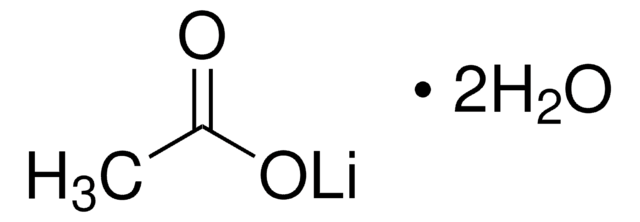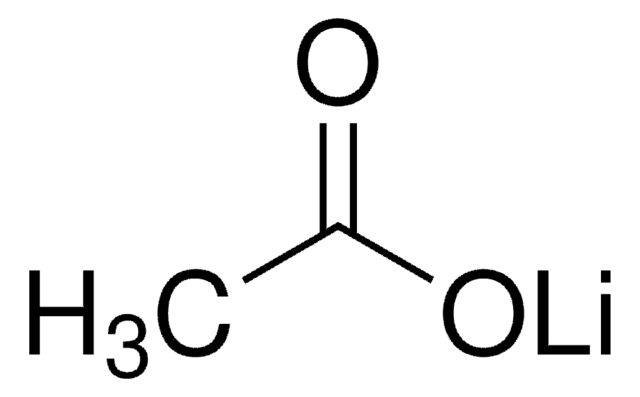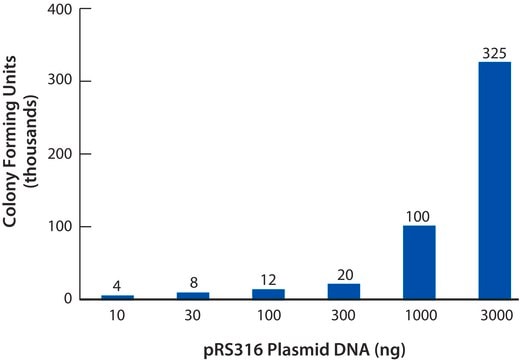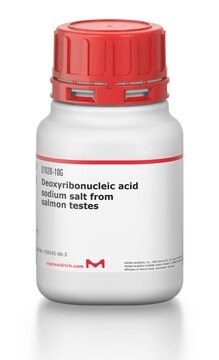L6883
Lithium acetate dihydrate
reagent grade
Synonyme(s) :
Acetic acid lithium salt
About This Item
Produits recommandés
Qualité
reagent grade
Niveau de qualité
Forme
solid
Composition
Lithium acetate, ≥63%
pH
≤9.5 (5% in solution)
Pf
53-56 °C (lit.)
Traces d'anions
chloride (Cl-): ≤0.003%
sulfate (SO42-): ≤100 ppm
Traces de cations
Fe: ≤20 ppm
Na: ≤50 ppm
Chaîne SMILES
[Li+].[H]O[H].[H]O[H].CC([O-])=O
InChI
1S/C2H4O2.Li.2H2O/c1-2(3)4;;;/h1H3,(H,3,4);;2*1H2/q;+1;;/p-1
Clé InChI
IAQLJCYTGRMXMA-UHFFFAOYSA-M
Vous recherchez des produits similaires ? Visite Guide de comparaison des produits
Catégories apparentées
Description générale
Application
- Carbon-modified nanocrystalline LiFePO4 (LiFePO4/C) via sol-gel method using ferrous sulfate, phosphoric acid, citric acid, and polyethylene glycol.
- Lithium-graphite nanotubes (LGN) by chemical vapor deposition (CVD) method in the presence of copper with methane as the carbon source.
- Conductive polycrystalline solid-state electrolyte (Li4B7O12Cl) by reacting with boric acid and copper(II) chloride dihydrate in trihexyltetradecylphosphonium chloride via an ionothermal method.
It can also be used as a catalyst in the enantioselective synthesis of functionalized 1,3-thiazin-4-ones via N-heterocyclic carbene (NHC)-catalyzed [3 + 3] annulation of thioamides.
Code de la classe de stockage
11 - Combustible Solids
Classe de danger pour l'eau (WGK)
WGK 1
Point d'éclair (°F)
Not applicable
Point d'éclair (°C)
Not applicable
Faites votre choix parmi les versions les plus récentes :
Déjà en possession de ce produit ?
Retrouvez la documentation relative aux produits que vous avez récemment achetés dans la Bibliothèque de documents.
Les clients ont également consulté
Notre équipe de scientifiques dispose d'une expérience dans tous les secteurs de la recherche, notamment en sciences de la vie, science des matériaux, synthèse chimique, chromatographie, analyse et dans de nombreux autres domaines..
Contacter notre Service technique






